
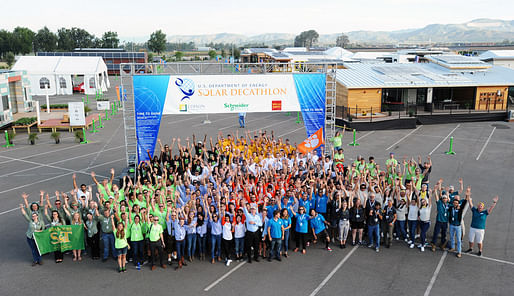
The sun beat down onto the asphalt grounds of the Orange County Great Park in Irvine, California, where a village of 14 solar-powered houses popped up for the U.S. Department of Energy’s Solar Decathlon. Multi-disciplinary teams of college students worldwide dedicate two years to designing and planning their institution’s house, then spend just nine days assembling them from scratch in Irvine. Then, the competition begins.
Teams are tasked with constructing the house that best blends affordability and consumer appeal, and demonstrates optimal energy production and efficiency. The houses are evaluated in 10 contests based on merits of performance and livability. The team who scores the most out of a maximum 1,000 points is crowned the overall winner. Held biennially, the Decathlon attracts ambitious students who want to push the boundaries of the future of sustainable technology and housing, while honing their technical skills and toughening their skin for their forthcoming careers.
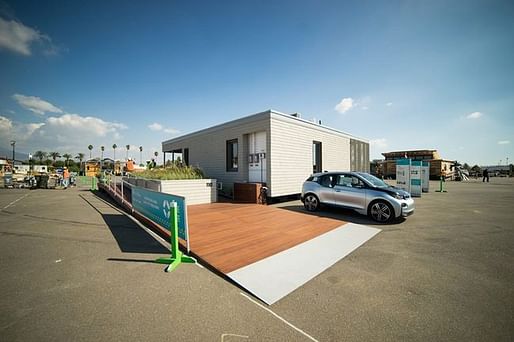

"SURE House" by Team Stevens Institute of Technology.
Since October 8, student decathletes welcomed visitors of all ages into their solar-powered abodes. The net-zero energy homes are as diverse as the stories behind them, drawing influence from their local communities. Projects like “ShelteR³” by Drury University + Crowder College and the “SURE House” by the Stevens Institute of Technology emphasized storm resilience, in response to the 2011 Joplin tornadoes and Hurricane Sandy, respectively. The SURE House turned out to be one of the favorites throughout the competition, and it's not too surprising that they were the overall winner of the Decathlon. "This is one of the smartest houses I've seen," said one woman as she exited the home. Evidently, the jury thought the same. Team Stevens won first place in the Architecture, Communications, and Market Appeal that kept them in the lead until the end.
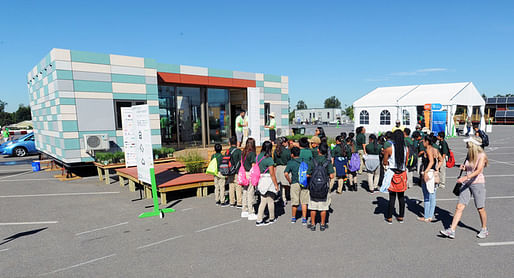
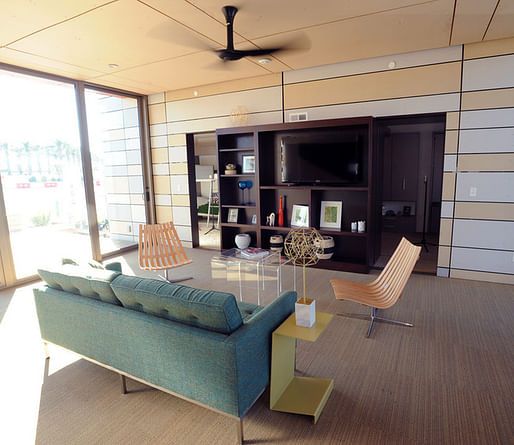
“ShelteR³” by Team Crowder/Drury.
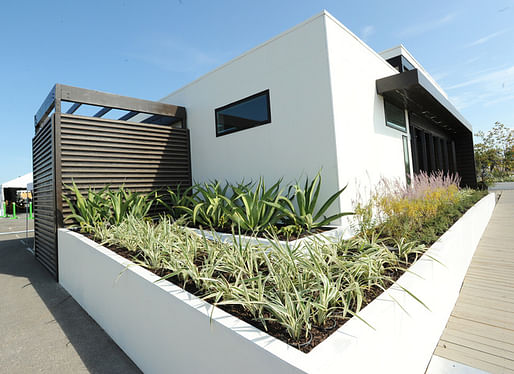

"Casa del Sol" by Team Orange County.
The University of California, Davis’ “Aggie Sol” focused on accommodations for low-income and farm worker families. “Casa del Sol” by local Team Orange County touched upon shifting household demographics in Southern California by including lodging for extended family and “boomerang kids”. Second-place overall winner University at Buffalo designed the “GRoW Home” as a livable greenhouse/solarium that blended indoor and outdoor spaces. And since the 2015 Decathlon is in drought-struck California, students made sure to point out how their houses integrated water-conservation methods.
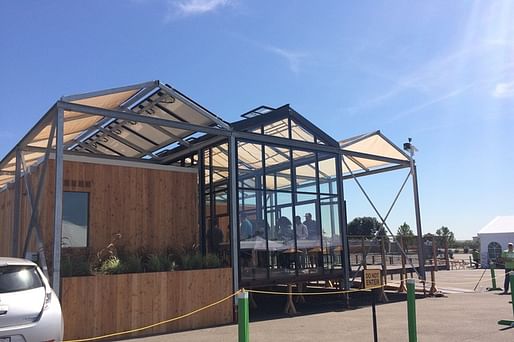

"GRoW Home" by Team U at Buffalo.
The Solar Decathlon is “education on a lot of levels”, as the event’s creator and director Richard King put it when I spoke with him the day before the grand opening. By showcasing homes that address timely environmental and urban-living issues, without breaking the bank, the Decathlon continues its drawn-out efforts to pull the public’s attention toward upcoming sustainable technologies and demonstrate how they can integrate them into their current homes and lifestyles. However, an equally valuable — if not more palpable — effect of the Decathlon is the hard-earned project experience that architecture and engineering students gain. Not to mention the personal growth that comes with building an entire house.
Undoubtedly, solar decathletes undergo a rigorous two years that many competitors described as incomparable to any previous school or work experience they’ve had thus far. In addition to classwork and internships, students must handle budgets, coordinate with industry partners, and raise enough funds, followed by safely transporting their house from their school and assembling it on site — all within the Department of Energy’s tight deadlines.


"Alf House" by Team NY Alfred.
Katie Dussing, an architecture team lead for Team NY Alfred, had the classic case of jumping on board without knowing what to expect. Initially unaware about the Solar Decathlon, she didn’t realize “how intense it really was” until her first trip to Irvine this past January for a workshop. “We thought, ‘Alright, this is a big thing,'" she recalled. “We didn’t know how large [of a difference] that little tiny Alfred University could make!”
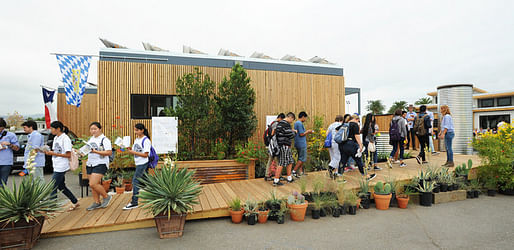
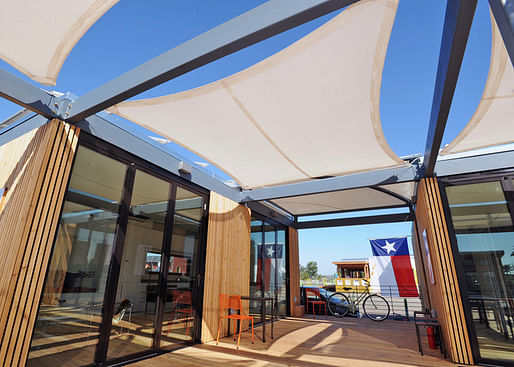
"NexusHaus" by Team Texas/Germany.
While the Decathlon tries to balance function and aesthetics in its contests, it’s easy to get distracted by the latter. Aesthetics sell, but too much focus on it takes away from the fact that students join a large-scale housing competition like the Solar Decathlon driven to produce feasible affordable designs that will improve people's lives in the long run. They don’t sign up for a Dwell Magazine showcase.
“We’re architects, we love the aesthetics, right? But I think aesthetics are a force too dominant for the purpose of this contest,” said Travis Schneider, a design-build manager from collaborating Team Texas/Germany, who reached fourth place overall by the end of the competition. “If you create something that functions and is actually affordable, and accomplishes the goals all those Congressmen and everyone says needs to happen, but then [those legislators] point to things like [the Decathlon] as what’s leading the way towards making [those goals] a reality? Then I think that’s a bit of a misconception,” he continued.


"Indigo Pine" by Team Clemson.
The true reward for students lies in the experience itself, where they learn to be the project experts and discover what they are capable of. Moreover, interacting with the public and getting to know their fellow decathletes makes the experience all the more memorable.
“This is real world on steroids [...] versus a typical studio project [where] it’s more of an incubator for ideas and you can make whatever you want,” said Clair Dias, a project manager for the Clemson University team. They ranked sixth overall, and won second place in the Architecture and Communications contests. “Because they set all these limits on you, you have to be that much more creative to make an interesting product.”
Reflecting on the last two years, participating in the Decathlon is highly reassuring for Dias as she prepares to take on the workforce. “It is a ton of work and you have got to be dedicated or else you’re probably not going to make it through [...] It’s definitely a confidence builder to go through this, and see what you can make from scratch in nine days.”

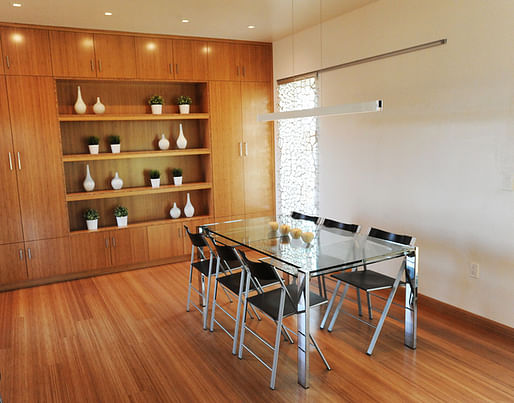

Going through jury evaluations, it’s “anything goes” for the students — and that’s not just the exhaustion talking. They felt proud of their work and more so with their teammates for reaching the final stretch. “We spent two years, we know this house inside and out,” said Lisa-Marie Mueller, co-project manager of Cal Poly San Luis Obispo’s "INHouse" with upbeat confidence. The team scored third place for both the Architecture contest and overall. “We’re telling our story, and the rest is up to them!”
Previously on Archinect:
Twenty teams listed for DOE Solar Decathlon 2015 at OC Great Park
Archinect Field Trip: Solar Decathlon 2013, Basking in Arrays of Energy Efficiency
No Comments
Block this user
Are you sure you want to block this user and hide all related comments throughout the site?
Archinect
This is your first comment on Archinect. Your comment will be visible once approved.